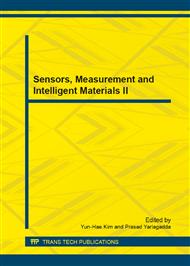p.1375
p.1382
p.1387
p.1391
p.1397
p.1402
p.1406
p.1410
p.1414
Dynamic Response Modeling of Fluid-Solid Coupling for Wet Brake Disc
Abstract:
Due to the poor conditions of wet brake cooling and the high temperature of the working characteristics, this paper intended to introduce the oil film vadose between the brake linings, considered the variation of volume of grooves on the friction plate, and then proposes the three-dimensional transient dynamic response of fluid-solid coupling mathematical model. By numerical analysis of the disc transient thermal stress field distribution on the friction plate, the friction surface temperature field variation is obtained. Finally, the results shows that the mathematical model is effective and feasible.
Info:
Periodical:
Pages:
1397-1401
Citation:
Online since:
December 2013
Authors:
Price:
Сopyright:
© 2014 Trans Tech Publications Ltd. All Rights Reserved
Share:
Citation:


